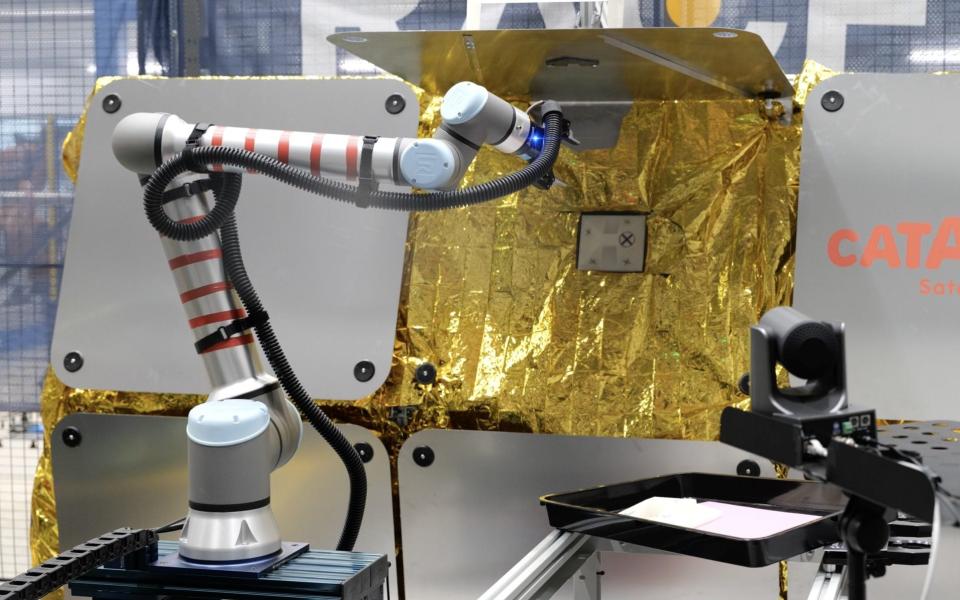Nuclear fusion robots could be sent into space to clean up floating debris

Nuclear fusion robots are being prepared for use in space to remove debris and revive defunct satellites.
Thousands of expired spacecraft are in orbit around Earth and scientists have no way of removing or repairing them.
A team of engineers specialising in nuclear fusion energy at the UK Atomic Energy Authority has now taken its expertise in robotics and applied it to space.
They use remote-controlled robots regularly to work inside nuclear fusion reactors and they can do repairs in places too dangerous for humans.
Now, the team has conducted experiments in a lab using the same machines and digital techniques to show repairing satellites will be possible.
“If you look at the statistics, there are about 6,000 satellites around Earth and half of them are not working, whether that is because of no fuel, broken components or them being discarded launch components,” Dr Indira Nagesh, principal engineer of UKAEA, told The Telegraph.
Matthew Goodliffe, control systems engineer at UKAEA, said in their experiment they worked with experts at Satellite Applications Catapult and proved that a robot can remove and replace broken components.

The machine has a pincer-like component on the end of a nimble robotic arm, but this can also be switched out for various other apparatus, including a "human-like hand," Mr Goodliffe said.
The robot costs around £30,000, can lift up to 12.5 kilograms, can reach outwards up to 1.3 metres, weighs 33.5kg and is controlled remotely by an engineer manipulating a "robotic twin" of the machine.
While the concept has been proven to work, the team now hopes to get more funding to pursue the concept further. The technology is sound, the experts say, but it will need upgrading and to be made more robust before it can go to space.
Dr Nagesh said: “The rewards for recreating the ultimate fusion energy source here on Earth are enormous, with the potential for near limitless power for generations to come.
“Right now, we’re proving that our technology has lots more immediate benefits in adjacent sectors.
“Identifying technical challenges and solving them for in-orbit servicing and repair is exciting. It will greatly help to improve the longevity of spacecraft and reduce space litter.”

The potential of using these robots in space are vast, the experts say, as it could allow future missions to repair multi-million pound spacecraft while also removing space debris from orbit.
The James Webb Space Telescope (JWST) is a million miles away from Earth and is expected to last for 20 years, but it was built with the intention of being out of reach of humanity, with repairs being impossible.
But as NASA learnt with Hubble, things can go wrong with telescopes, with repairs being essential. However, while astronauts could go to Hubble and fix it, that is not possible with JWST.
Dr Nagesh said it is “absolutely possible” that these robots could be sent to James Webb in the future if repairs, upgrades or refuelling is needed.
“If we can show that it works in low Earth orbit then we can be confident it will work beyond that as well,” she told The Telegraph.
“It is possible, absolutely.”

